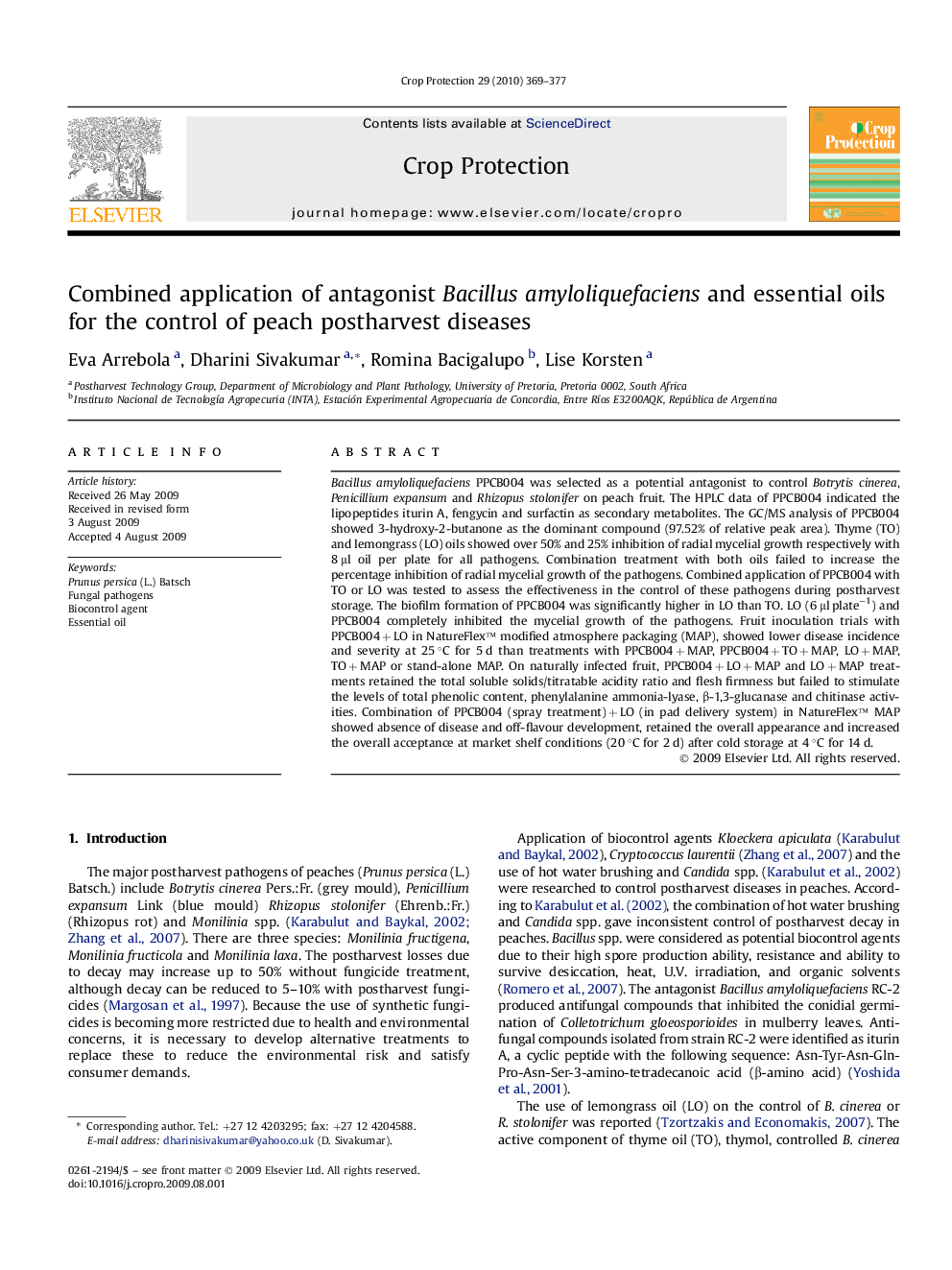| Article ID | Journal | Published Year | Pages | File Type |
|---|---|---|---|---|
| 4507471 | Crop Protection | 2010 | 9 Pages |
Bacillus amyloliquefaciens PPCB004 was selected as a potential antagonist to control Botrytis cinerea, Penicillium expansum and Rhizopus stolonifer on peach fruit. The HPLC data of PPCB004 indicated the lipopeptides iturin A, fengycin and surfactin as secondary metabolites. The GC/MS analysis of PPCB004 showed 3-hydroxy-2-butanone as the dominant compound (97.52% of relative peak area). Thyme (TO) and lemongrass (LO) oils showed over 50% and 25% inhibition of radial mycelial growth respectively with 8 μl oil per plate for all pathogens. Combination treatment with both oils failed to increase the percentage inhibition of radial mycelial growth of the pathogens. Combined application of PPCB004 with TO or LO was tested to assess the effectiveness in the control of these pathogens during postharvest storage. The biofilm formation of PPCB004 was significantly higher in LO than TO. LO (6 μl plate−1) and PPCB004 completely inhibited the mycelial growth of the pathogens. Fruit inoculation trials with PPCB004 + LO in NatureFlex™ modified atmosphere packaging (MAP), showed lower disease incidence and severity at 25 °C for 5 d than treatments with PPCB004 + MAP, PPCB004 + TO + MAP, LO + MAP, TO + MAP or stand-alone MAP. On naturally infected fruit, PPCB004 + LO + MAP and LO + MAP treatments retained the total soluble solids/titratable acidity ratio and flesh firmness but failed to stimulate the levels of total phenolic content, phenylalanine ammonia-lyase, β-1,3-glucanase and chitinase activities. Combination of PPCB004 (spray treatment) + LO (in pad delivery system) in NatureFlex™ MAP showed absence of disease and off-flavour development, retained the overall appearance and increased the overall acceptance at market shelf conditions (20 °C for 2 d) after cold storage at 4 °C for 14 d.
